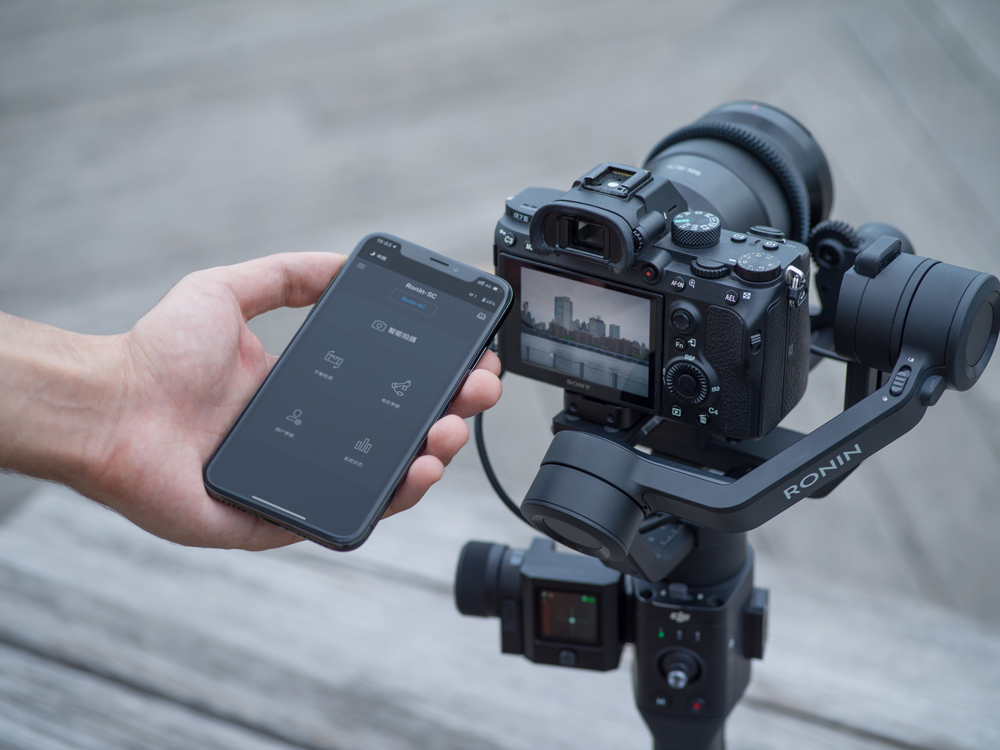Difference between the Ronin-S and the Ronin-SC

The Ronin-SC standard and pro combos have finally arrived into our showrooms, which brings the Ronin – S line-up to 4 products in total. The Ronin-SC pro combo is like the Ronin-S standard kit and the Ronin-SC standard combo is like the Ronin-S essentials kit. Confusing right?
In this article, we plan to help you decide which Ronin-S is suits you the best.
DESIGN
In terms of design, both share the same design language, having a one handed, portable and detachable design. This design allows these gimbals to be very convenient especially compared to their dual handed counterparts.
The Ronin-SC weights 1.1kg and the Ronin-S weighs a total of 1.84kg. The Ronin-SC is easier to use over long periods, however the with the new Ronin-S dual grips, the Ronin-S is significantly easier to use over long periods. A great tip is to sit the tripod legs into your hip to help take the load off your arms.
The Ronin-SC has this neat feature where it can lock the gimbals in place, so they arm do not move and swing around. The Ronin S lacks this feature, instead users will need to “lock” the arms in place with Velcro strips.
CAMERA COMPATIBILITY
This is a very important aspect to consider when purchasing your Ronin, the SC is more so built for smaller, mirrorless cameras whereas the S is built for larger DSLR. However, what it really comes down to is what lens you plan to use with the Ronin.
Longer zoom lenses are going to be front heavy and the Ronin-SC does not have a lot of room to counter this weight, we have found certain set-ups just do not work. For example, the Canon EOS R with the 24-70mm lens and the adapter. This set-up is far too front heavy for the gimbal and simply will not balance. However, in contrast, we have balanced the Canon 5D Mark III with a 50mm prime lens without any issue on the Ronin-SC. The Ronin-S handle both set-ups with ease.
To counter this problem, counterweights must be used to ensure the set-up is balanced.
If you are using a mirrorless camera with a fast-prime lens, the Ronin-SC is a perfect solution. However, if you plan to use heavy zoom lenses, the Ronin-S will be a better option for you as you will be future proofing yourself and won’t find the Ronin-SC underpowered for your set-up.
The SC and S standard kit all include the focus wheel, (the SC also including the focus motor), which can help you when it comes to pulling focus or autofocussing. Those with Canon systems often find themselves skipping this function as the autofocus on the canon is extremely good.
Depending on what port your camera has, there are certain cables you can get for your Ronin that will allow you to use the stop/start recording button and change your camera settings within the Ronin App. You will need to have a cable if you want to utilise the Panorama, Motion lapse and Time-lapse functionalities.
FEATURES
Both these gimbals have very similar features; however, the SC just edges out on top with the two useful extra features.
The first feature is Active Track 3.0. This is a very intuitive and simple method to help you track a person/object without loosing them in the frame. All you need is your phone with the RONIN app downloaded. In the box there is an included phone mount where you simply mount your phone on top of your camera (you will need to rebalance your gimbal here) and then the app uses your phones camera to track the object. This information is communicated to the gimbal through the app, it does not communicate with the Camera. This means, you do not need a “compatible” camera to utilise active track!
The Second feature is force mobile; this feature allows users to rotate the gimbal in the same direction as the phone. It simply utilises the phones gyroscope and the Ronin-SC mimics the action through the app. This is a great feature to use when the phone is on the tripod to get smoother shots like a pro.
Both these gimbals have motion lapse, time-lapse and panoramas.
COMPARISON TABLE
|
|
Ronin-SC |
Ronin-S |
|
Weight |
1.1 kg |
1.84 kg |
|
Tested Payload |
2 kg |
3.6 kg |
|
Dimensions |
370mm x 150mm x 165mm |
486 mm x 202mm x 185mm |
|
Max. Operation Time |
11 hours |
12 hours |
|
Charging Time |
2 hours 30 minutes |
2 hours 30 minutes |
|
Sport Mode |
Yes |
Yes |
|
Underslung Mode |
Yes |
Yes |
|
Flashlight Mode |
Yes |
Yes |
|
Connections |
Bluetooth 5.0; USB-C |
Bluetooth 4.0; USB-C |
|
Active Track 3.0 |
Yes |
No |
|
Force Mobile |
Yes |
No |
|
Focus Motor |
Yes |
Yes |
CHOOSING A GIMBAL
If you are using a DSLR camera for your projects and have more extensive lens setups and more ambitious shooting environments, the Ronin-S is an excellent choice for you. The Ronin-S is a must- have handheld gimbal for event filmmakers, content makers, and DSLR camera owners.For content creators that would like a lighter and more travel-friendly gimbal stabilizer, Ronin-SC is an essential addition to their equipment. Perfect for vloggers and wedding videographers who shoot on the move, Ronin-SC emerges as a strong leader in the mirrorless camera gimbal market.
